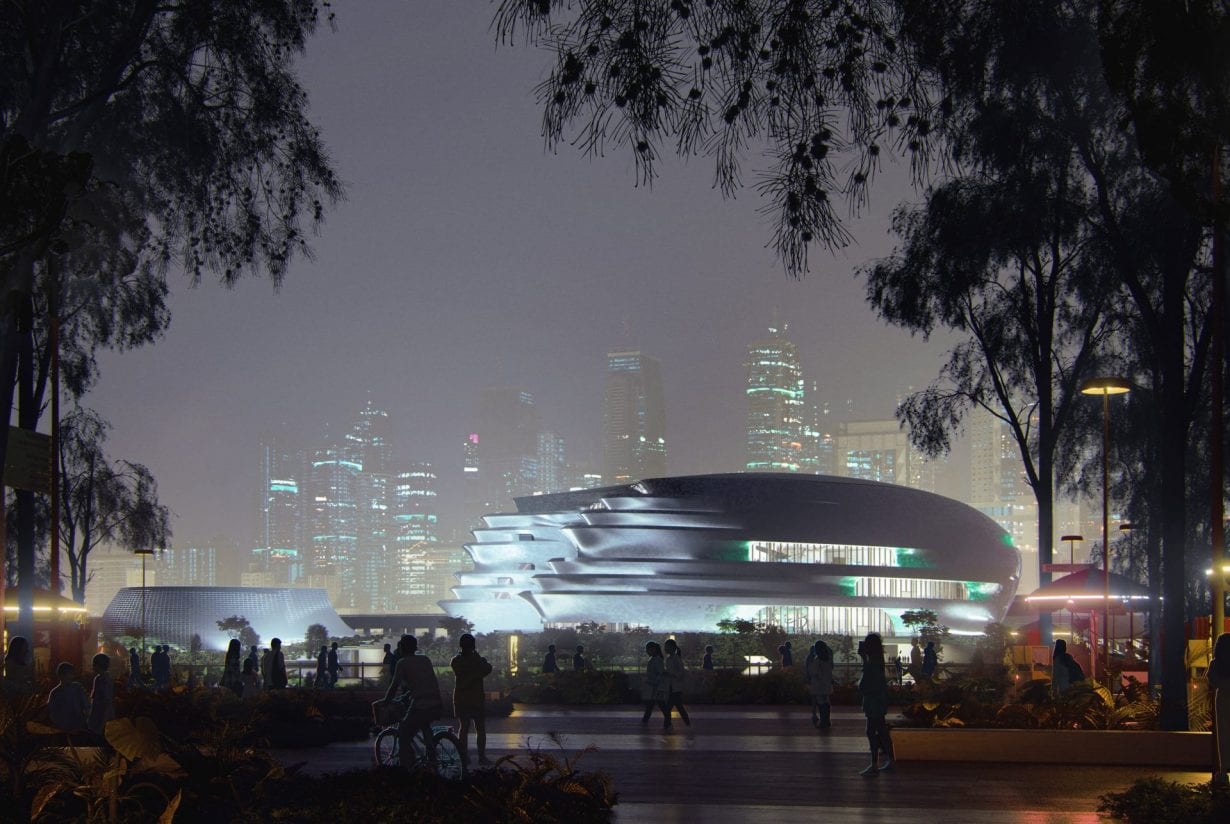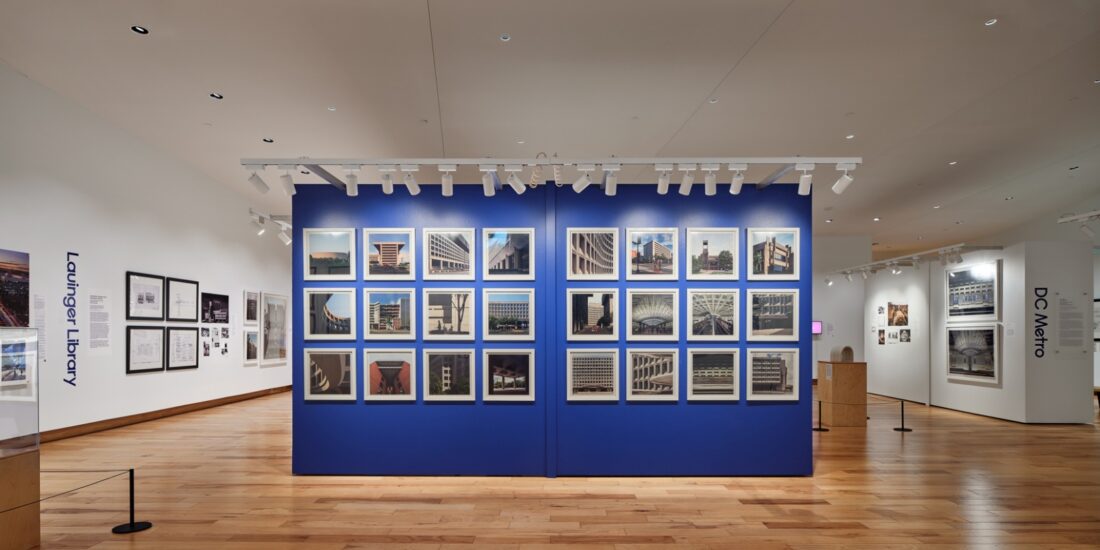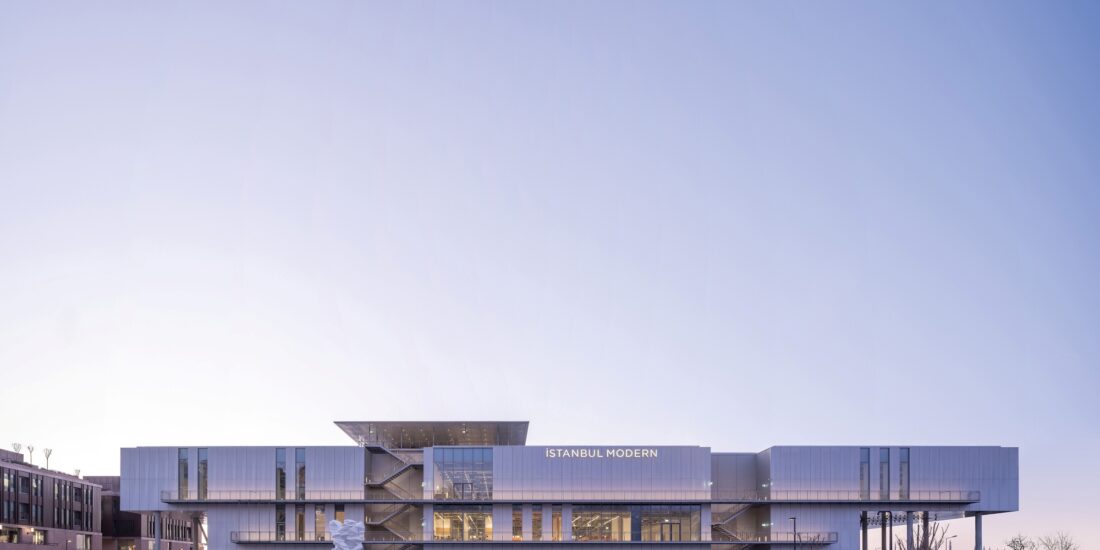ZHA designs for Shenzhen Science & Technology Museum
The geometric envelope of the future Shenzhen Science & Technology Museum, located within the Guangming Science City, in Shenzhen, is informed by its spatial flow.
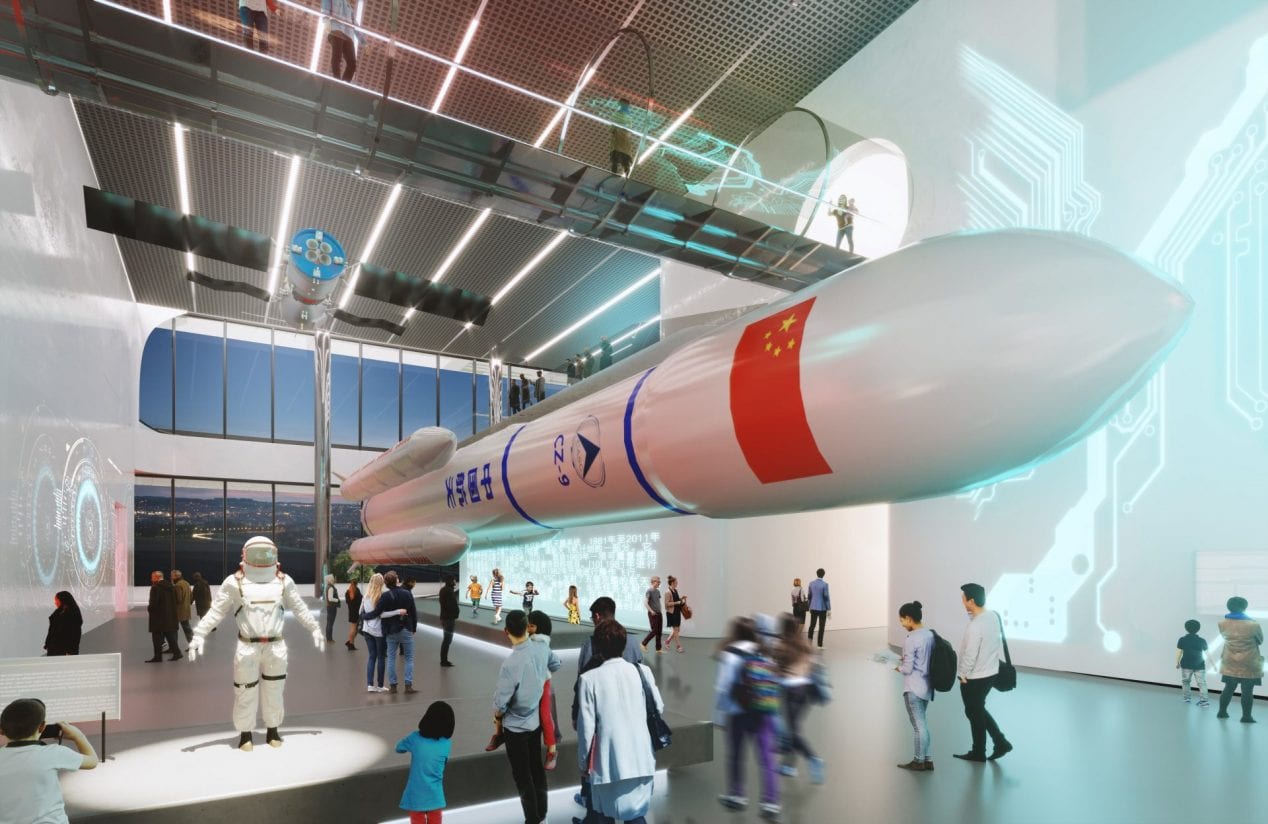 The future Shenzhen Science & Technology Museum is aimed to be a key destination to learn and explore the power of science and technology and understand their impact on our life and future. Linked with universities, schools, and innovation centers across China, the museum is designed to be a landmark institution within the region’s World Class Science City. With work on site now underway, construction of the Shenzhen Science & Technology Museum is planned for completion in late 2023.
The future Shenzhen Science & Technology Museum is aimed to be a key destination to learn and explore the power of science and technology and understand their impact on our life and future. Linked with universities, schools, and innovation centers across China, the museum is designed to be a landmark institution within the region’s World Class Science City. With work on site now underway, construction of the Shenzhen Science & Technology Museum is planned for completion in late 2023.
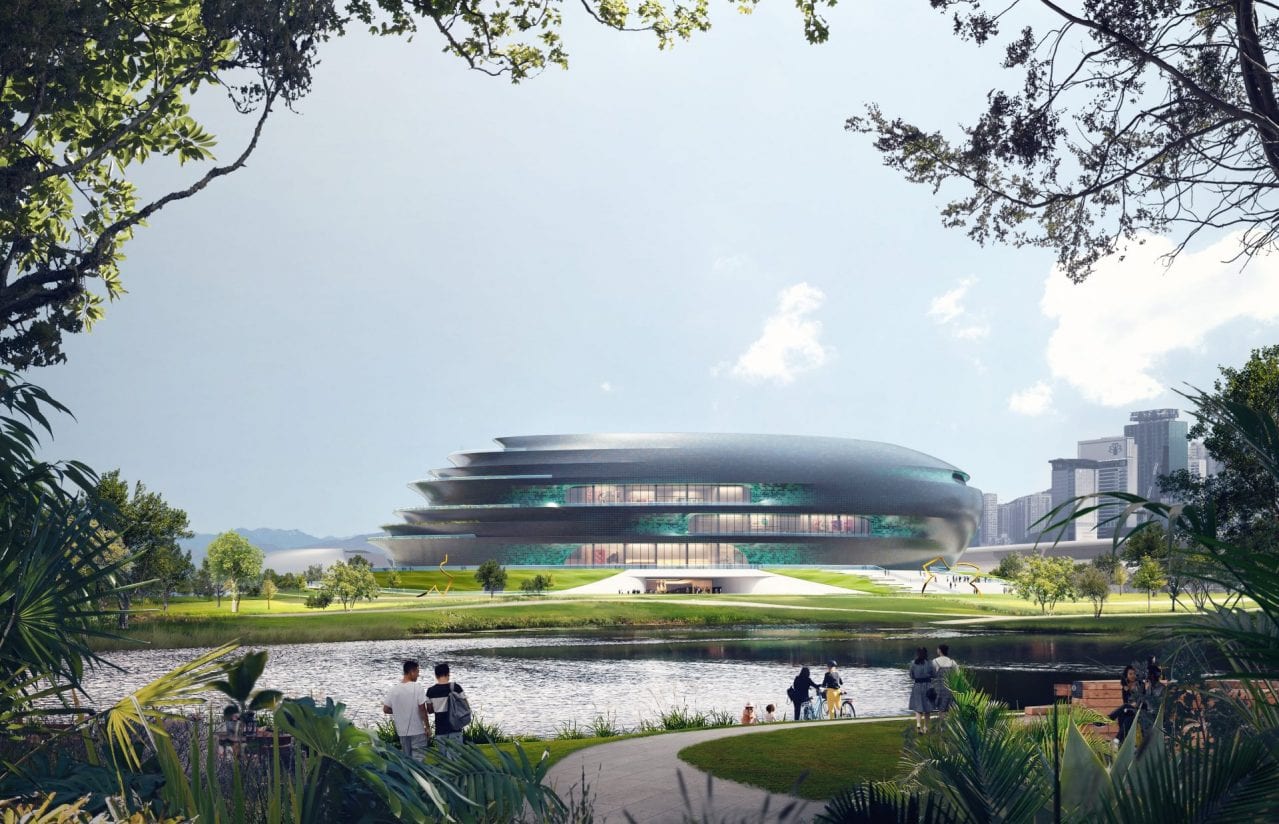 Fluid lines that define most of the architectural firm’s designs gradually elongate along the museum’s edges to offer glimpses into space in one end and on the other side it extends towards the landscape of the park adjacent to the museum.
Fluid lines that define most of the architectural firm’s designs gradually elongate along the museum’s edges to offer glimpses into space in one end and on the other side it extends towards the landscape of the park adjacent to the museum.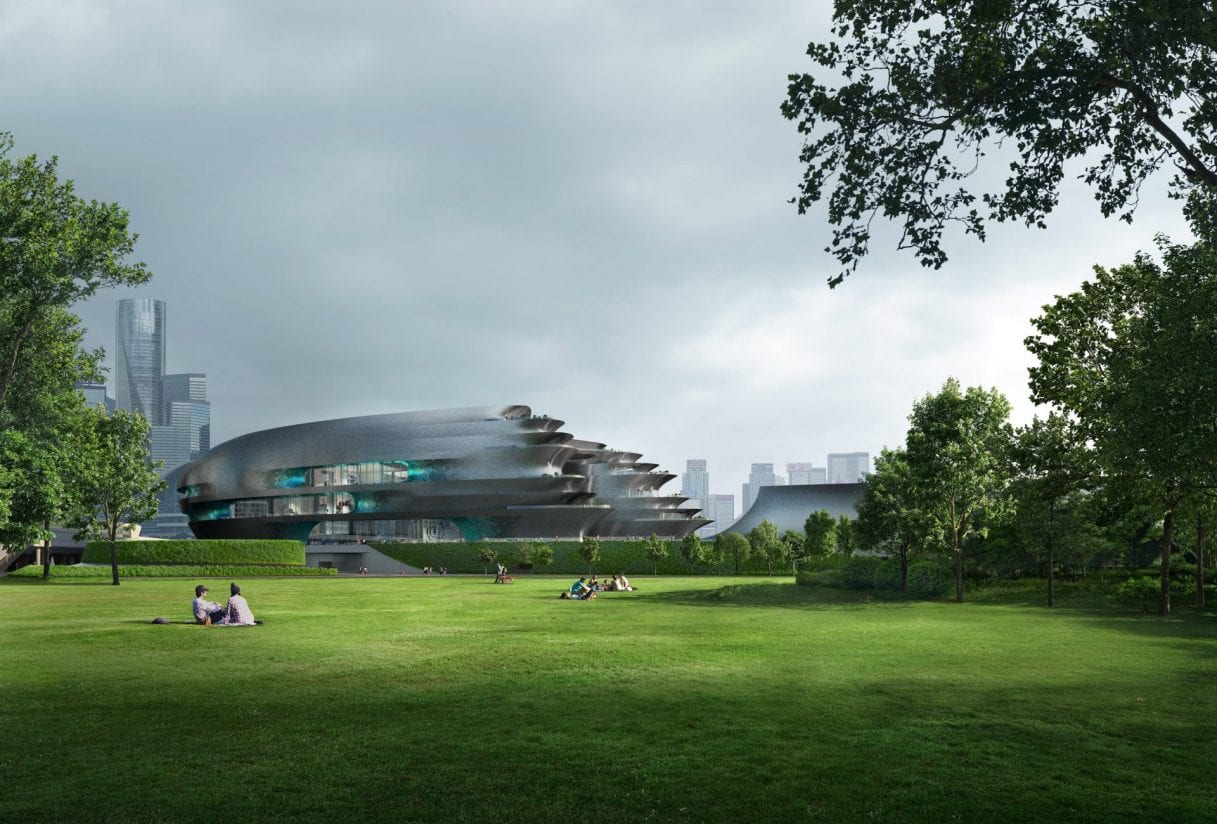 The design is a volumetric response to the distinct conditions of the site. Responding to the city to the east, the design is defined by its solidity and dynamic curvilinear geometries that express the many urban circulation routes to the east of the site, explain “With a total area of approximately 125,000 sq.m, the museum’s U-shaped plan provides intuitive orientation and navigation, guiding visitors through its sequence of interconnecting public spaces, galleries and educational facilities centered around its atrium courtyard; defining a journey of discovery that unites the city and park with the museum’s inspirational exhibitions,” reveals Edgar Payan, ZHA Project Architect.
The design is a volumetric response to the distinct conditions of the site. Responding to the city to the east, the design is defined by its solidity and dynamic curvilinear geometries that express the many urban circulation routes to the east of the site, explain “With a total area of approximately 125,000 sq.m, the museum’s U-shaped plan provides intuitive orientation and navigation, guiding visitors through its sequence of interconnecting public spaces, galleries and educational facilities centered around its atrium courtyard; defining a journey of discovery that unites the city and park with the museum’s inspirational exhibitions,” reveals Edgar Payan, ZHA Project Architect.
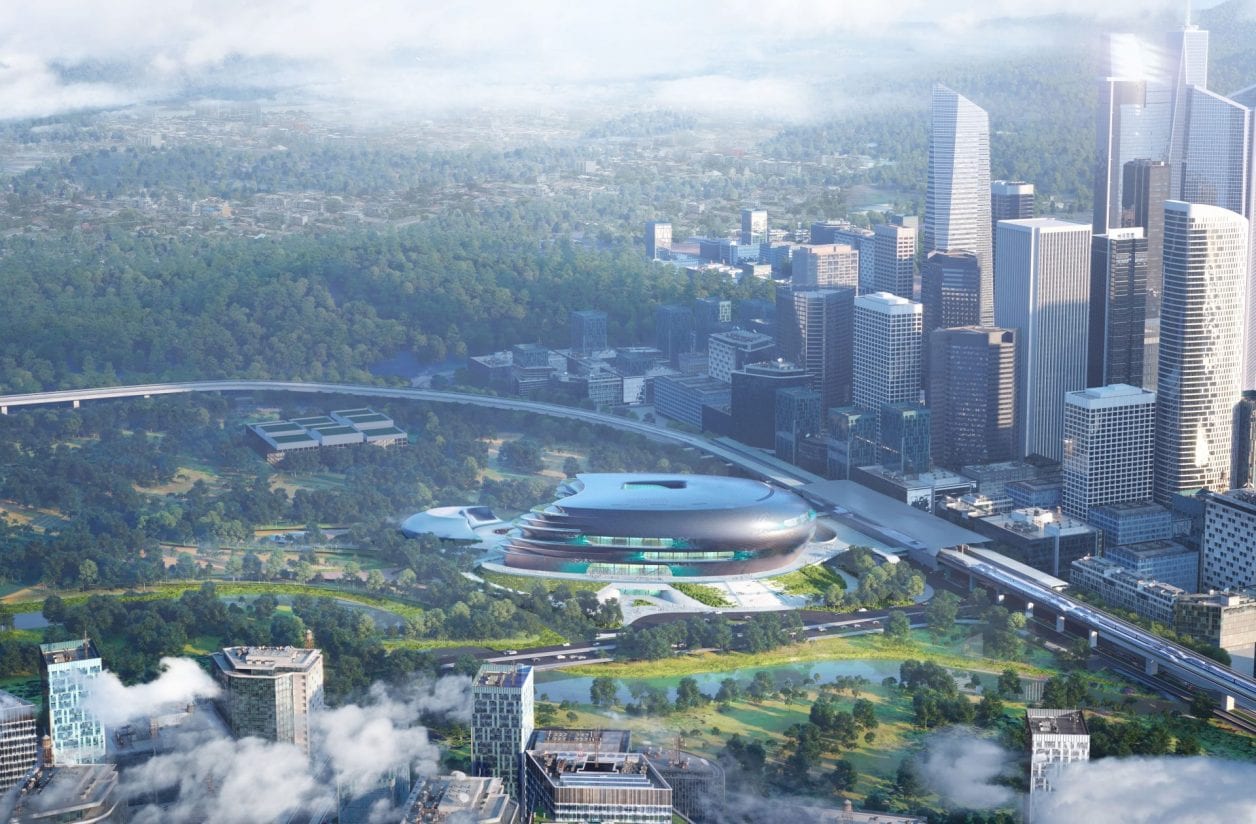 Incorporating maximum adaptability as a basic design principle, the geometries, proportions, and spatial experience of each gallery will offer visitors a rich and varied experience each time they visit. While some galleries can remain familiar and unchanged, others will change according to the type of exhibition showing at the time.
Incorporating maximum adaptability as a basic design principle, the geometries, proportions, and spatial experience of each gallery will offer visitors a rich and varied experience each time they visit. While some galleries can remain familiar and unchanged, others will change according to the type of exhibition showing at the time.
The geometric definition of the museum’s envelope has been informed by its programme, echoing the spatial flow within its galleries and connecting the museum’s central atrium with the public park to the west.
 These fluid lines are gradually elongated along the museum’s north and south elevations with openings carved into the volume to offer glimpses of the activity within. To the west, the building transforms as it extends towards the natural landscapes of Guangming Park to define layers of terraces that frame the glazed wall leading to the courtyard atrium at the heart of the museum.
These fluid lines are gradually elongated along the museum’s north and south elevations with openings carved into the volume to offer glimpses of the activity within. To the west, the building transforms as it extends towards the natural landscapes of Guangming Park to define layers of terraces that frame the glazed wall leading to the courtyard atrium at the heart of the museum.
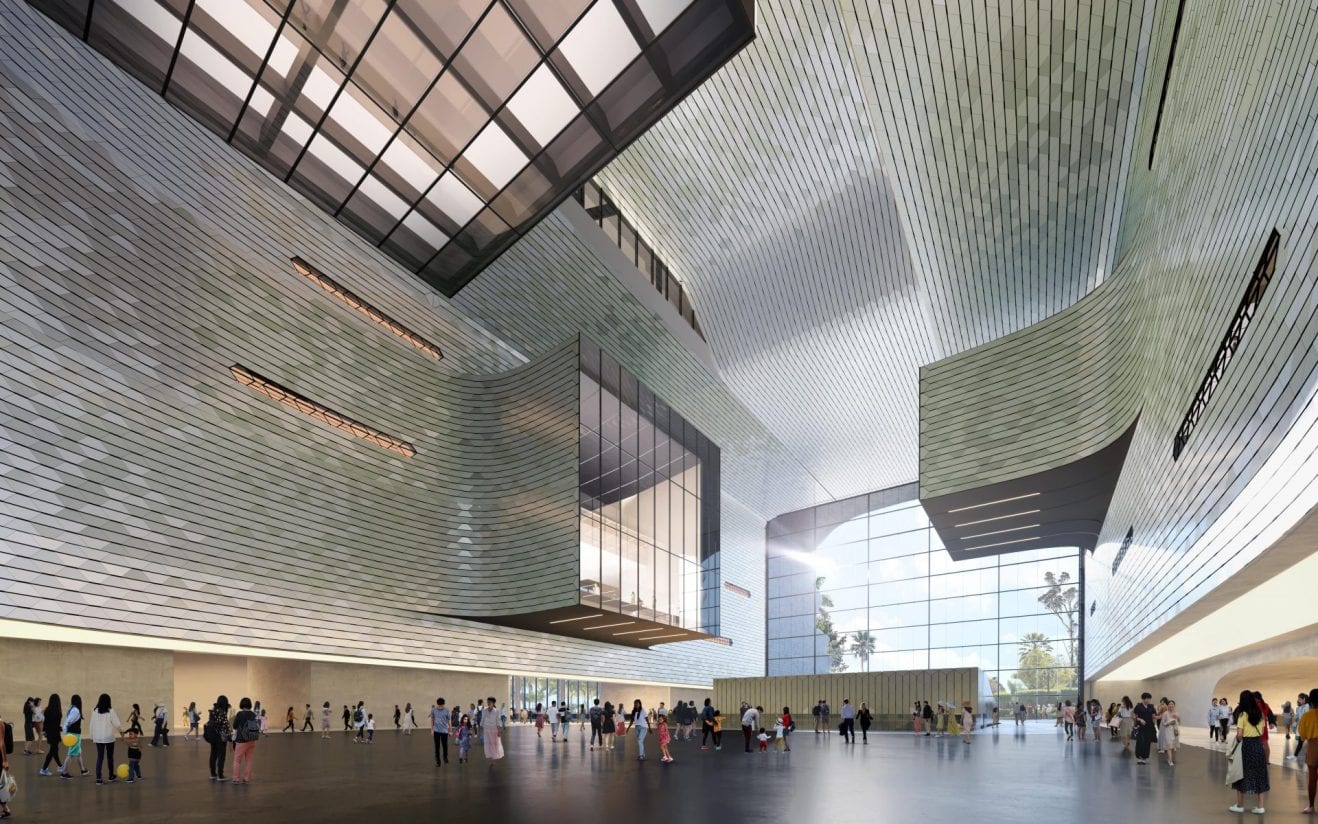 Becoming an important public building for the city and a significant center for youth education, the Shenzhen Science & Technology Museum is planned as a benchmark for sustainability within the region’s civic architecture.
Becoming an important public building for the city and a significant center for youth education, the Shenzhen Science & Technology Museum is planned as a benchmark for sustainability within the region’s civic architecture.
Detailed computer modeling and wind tunnel testing have provided extensive analysis of thermal performance, natural lighting, wind levels, and air quality to maximize the effectiveness of the building’s envelope in reducing energy consumption while ensuring visitor comfort and the preservation of its collection.
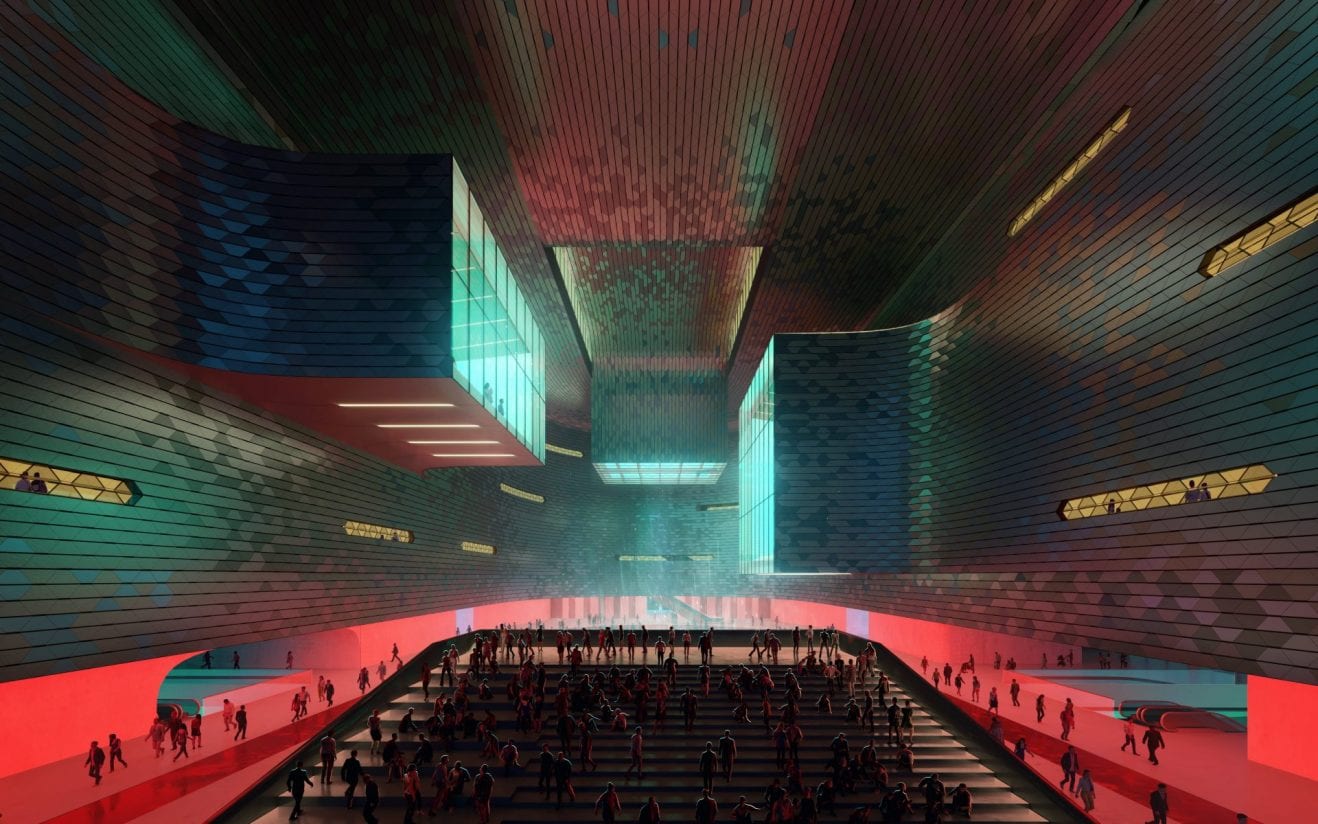 As the museum will be located within Shenzhen’s subtropical climate with a mild winter and warm spring/autumn, the design optimizes energy conservation during Shenzhen’s hot, humid summer with the very high thermal insulation performance of its envelope together with high-efficiency glazing, HVAC, lighting and smart building management systems.
As the museum will be located within Shenzhen’s subtropical climate with a mild winter and warm spring/autumn, the design optimizes energy conservation during Shenzhen’s hot, humid summer with the very high thermal insulation performance of its envelope together with high-efficiency glazing, HVAC, lighting and smart building management systems.
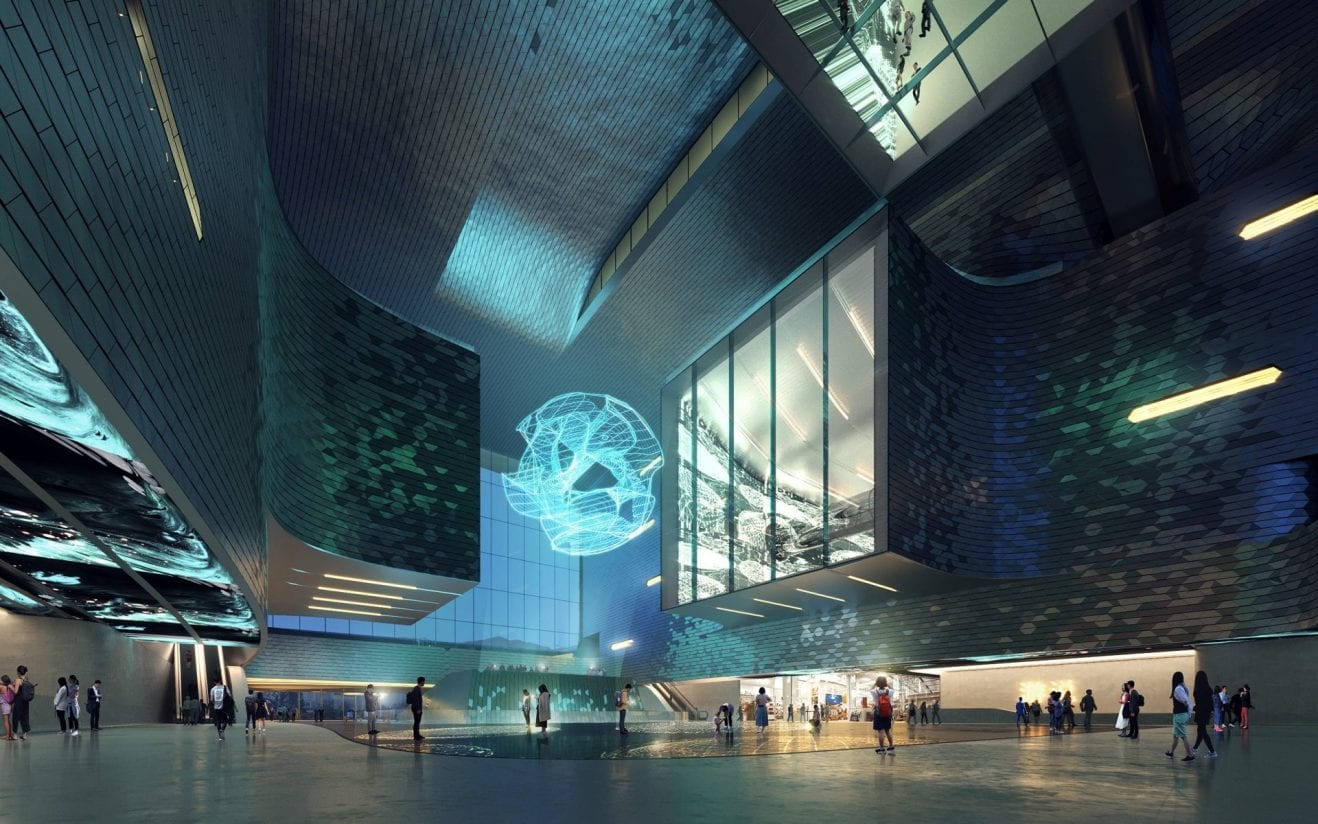 The museum’s procurement, full life-cycle performance, and adaptability for future configuration are also evaluated and assessed to reduce embodied carbon and achieve the highest Three-Star rating of China’s Green Building Evaluation Standard.
The museum’s procurement, full life-cycle performance, and adaptability for future configuration are also evaluated and assessed to reduce embodied carbon and achieve the highest Three-Star rating of China’s Green Building Evaluation Standard.
Project Location: Shenzhen, China
Client: The Bureau of Public Works of the Shenzhen Municipality
Operator: The Shenzhen Association for Science and Technology
Design: Zaha Hadid Architects (ZHA)
Consortium Local Design Institute: Beijing Institute of Architectural Design (BIAD)
Consortium Lead (ZHA) Team:ZHA Principal: Patrik Schumacher
ZHA Project Directors: Charles Walker (Commercial Director), Paulo Flores, Simon Yu
ZHA Project Architect: Edgar Payan
ZHA Project Senior Associate: Lydia Kim
ZHA Project Package Leads: Juan Montiel, Jinqi Huang, Niran Buyukkoz, Saman Dadgostar, Julian Lin, Richard Wasenegger
ZHA Project Team: Berkin Islam, Cheryl Lim, John Kanakas, Sven Torres, Michael On, Yuxuan Zhao, Enoch Kolo, Karina Linnsen, Boyan Hristov, Bechara Malkoun, Mansel Haynes
All pictures courtesy Zaha Hadid Architects (ZHA)


